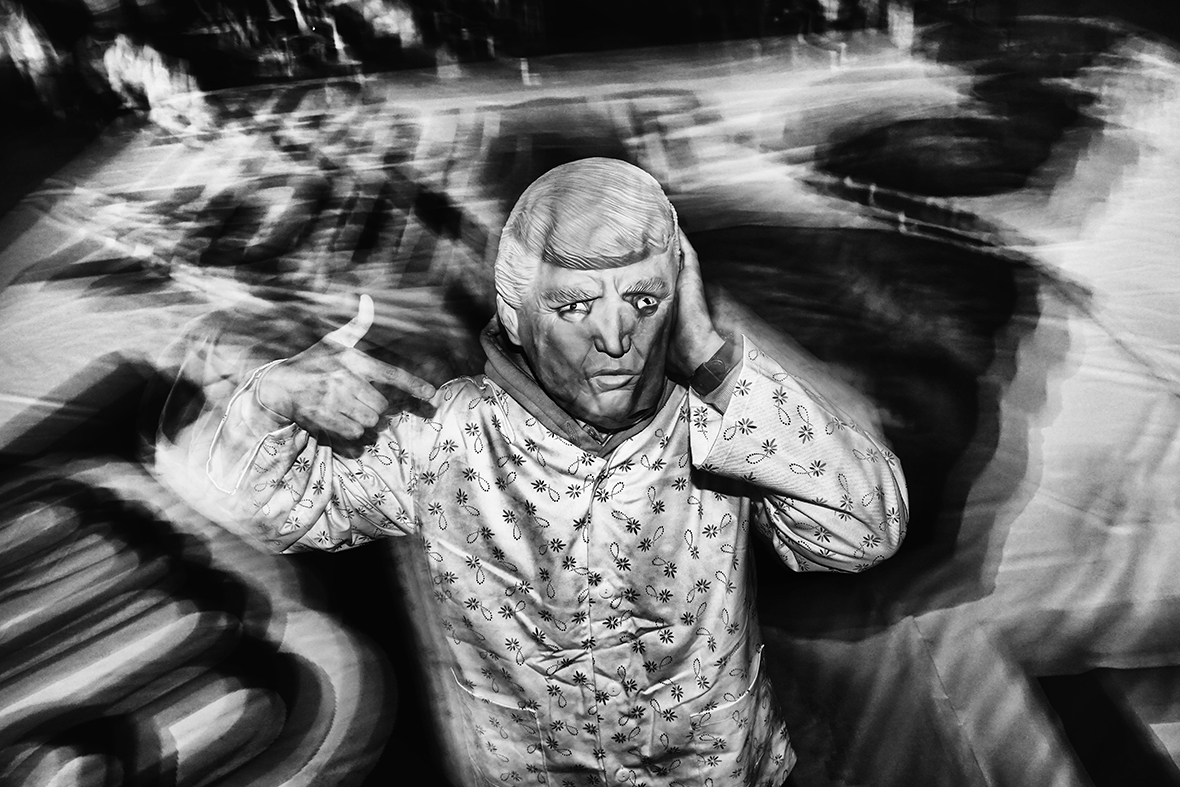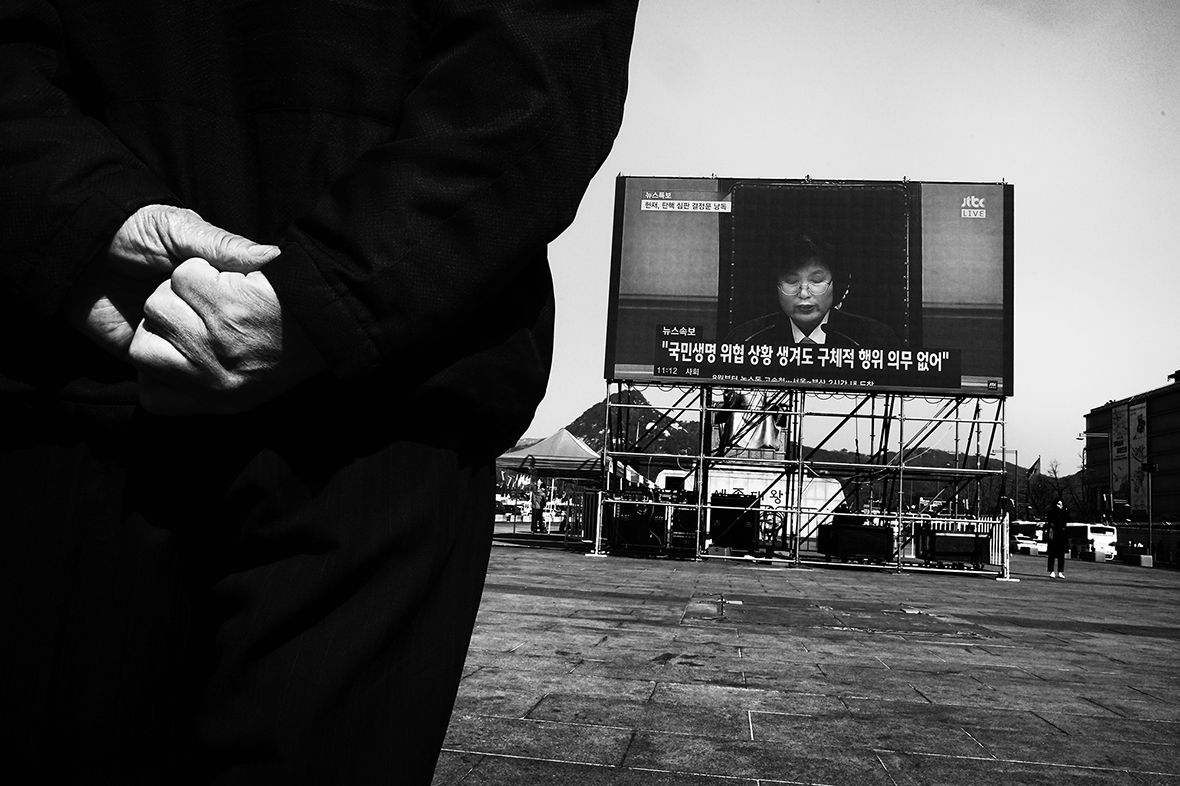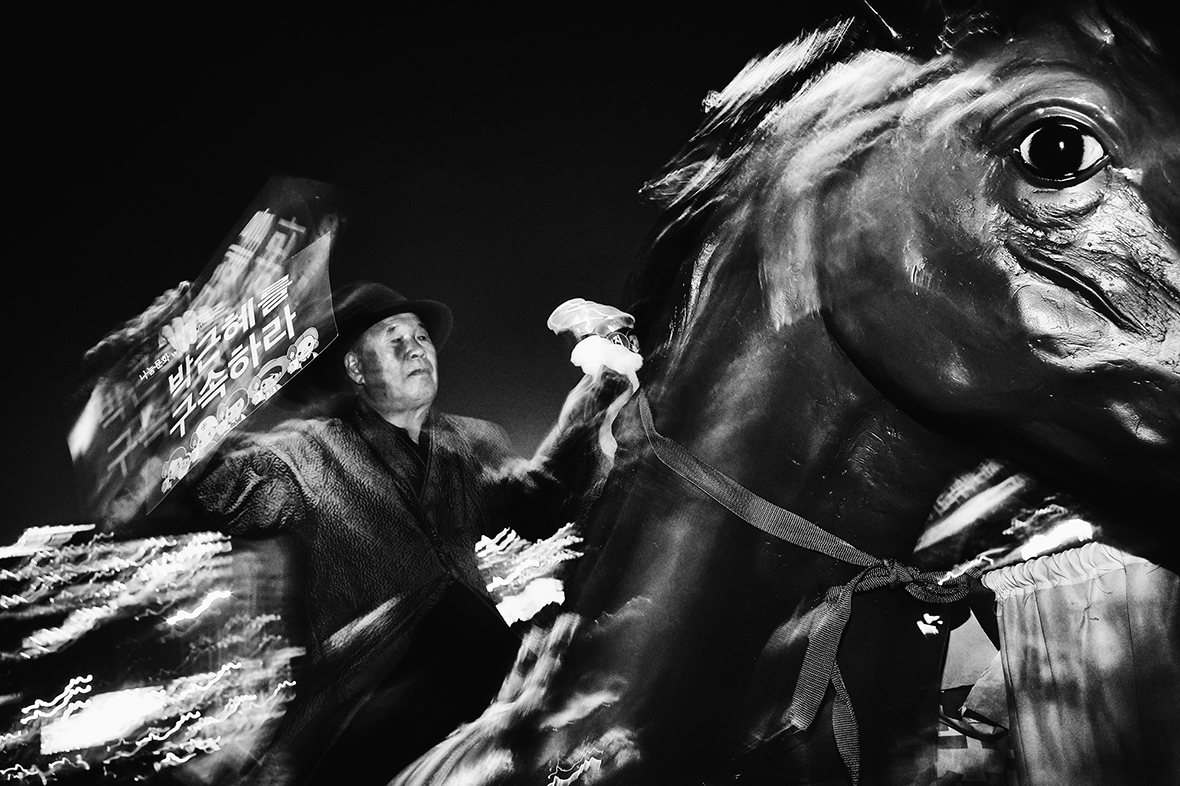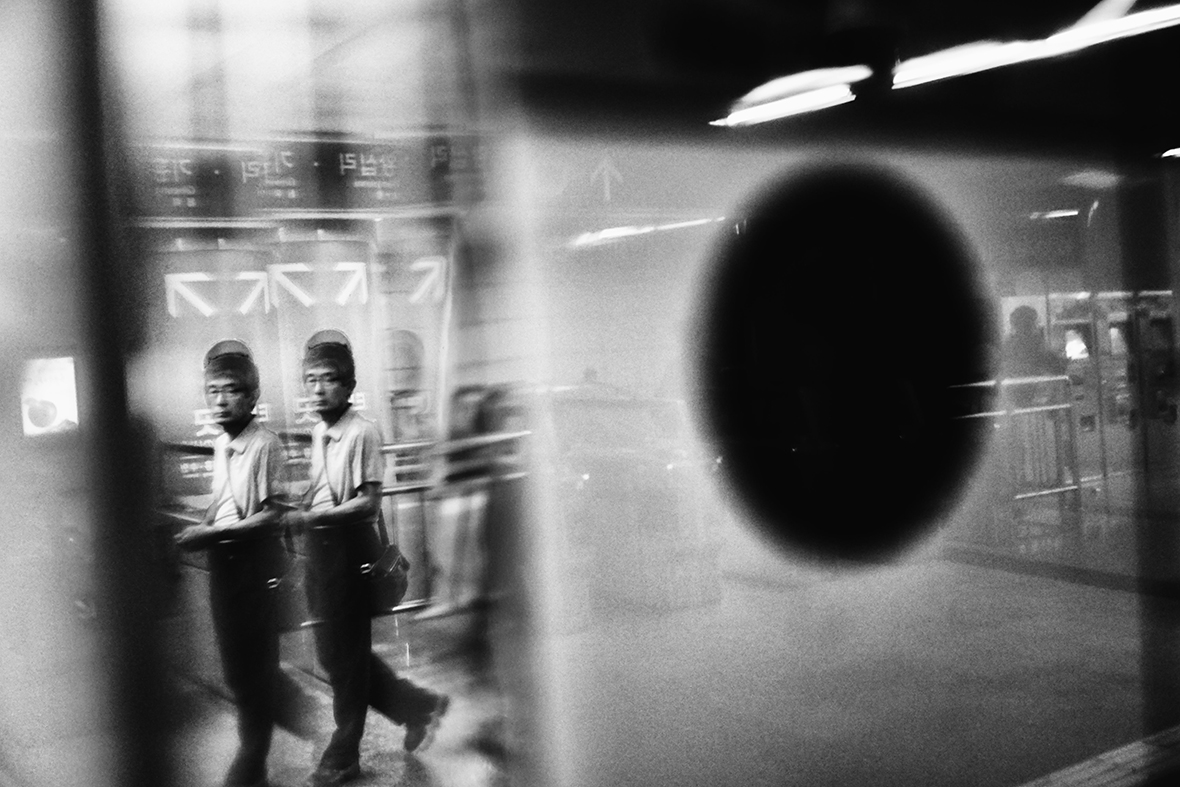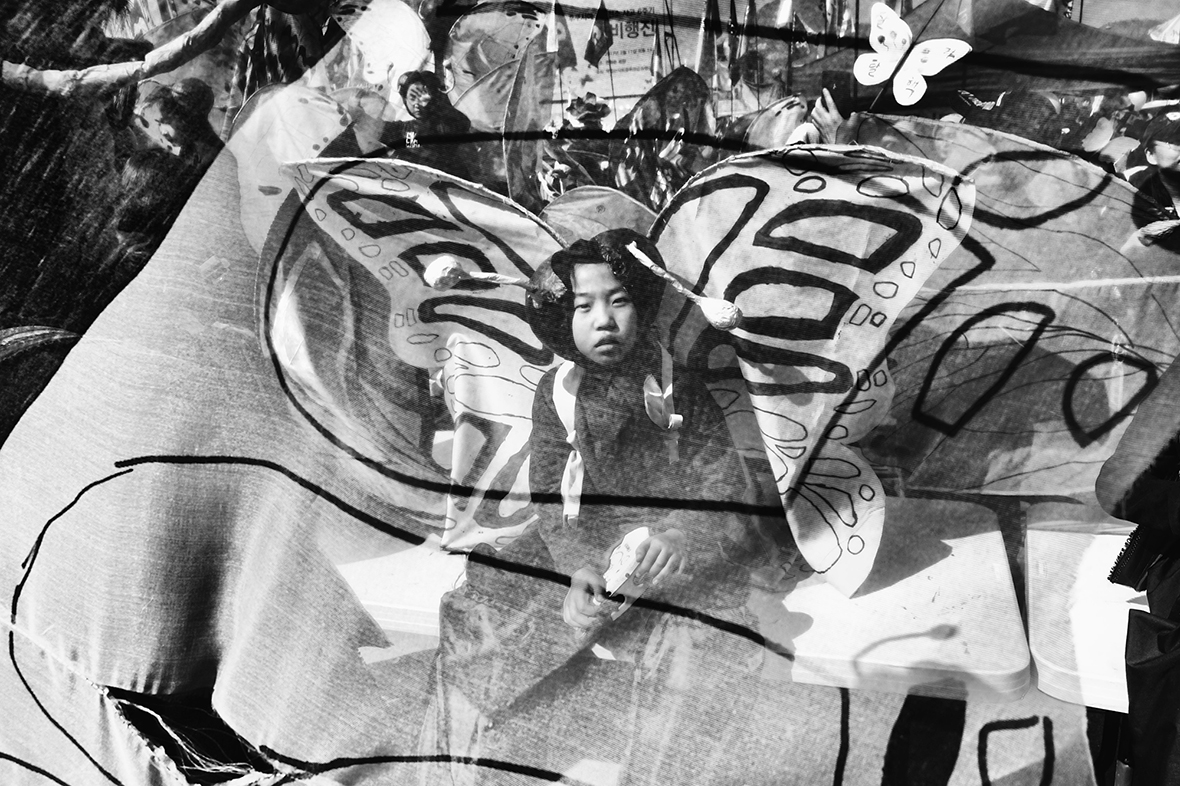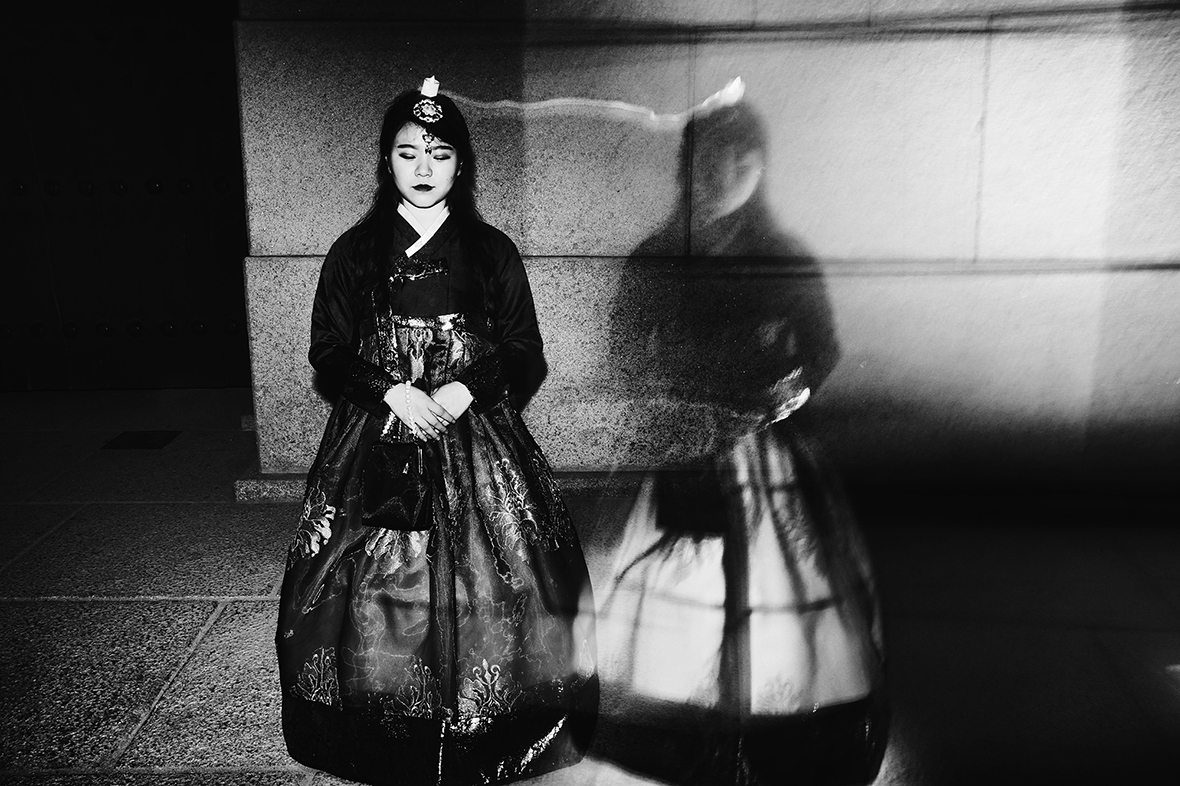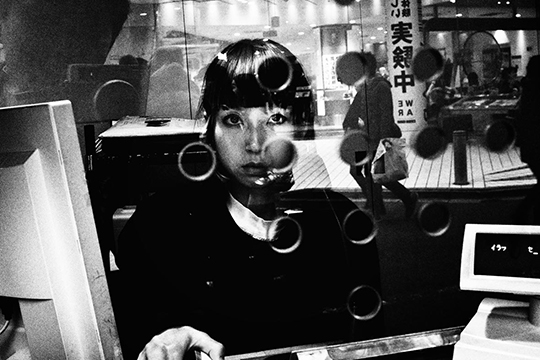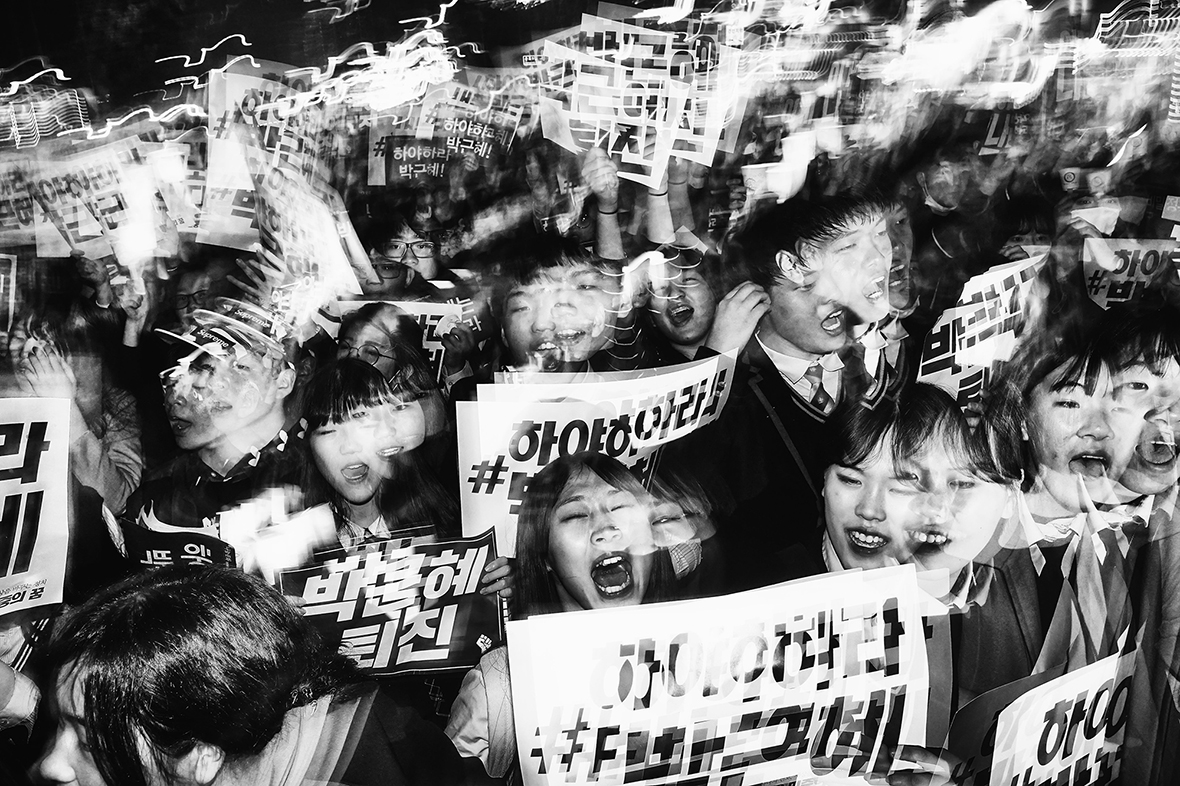
Korean-American photographer Argus Paul Estabrook believes that art should contribute to a greater understanding of our surrounding world, and he, as a photographer, has the responsibility to help present new perspectives and provoke critical thinking. While he’s best known for his street photography, Estabrook considers his work to be more a form of personal documentary rather than photojournalism. “Everyone who shoots on the street has a relationship with it,” he tells us. “They know what it means to be on a journey, searching for something yet not knowing what that might be.”
美籍韩裔摄影师 Argus Paul Estabrook 认为,艺术应该有助于我们去更加了解这个世界。而他作为一名摄影师,肩负着提出新观点和批判思维的责任。 虽然他以街头摄影闻名,但 Estabrook 认为自己的作品更像是个人观点的纪录,而非单纯纪录外在事件的新闻摄影。 “每个在街上拍照的人都与‘街头’有着特殊的连结关系。”他告诉我们, “他们知道当带着相机上街头,这段旅程代表的真正意义为何。是在路上寻找一些东西,即使还不知道那些东西是什么。”
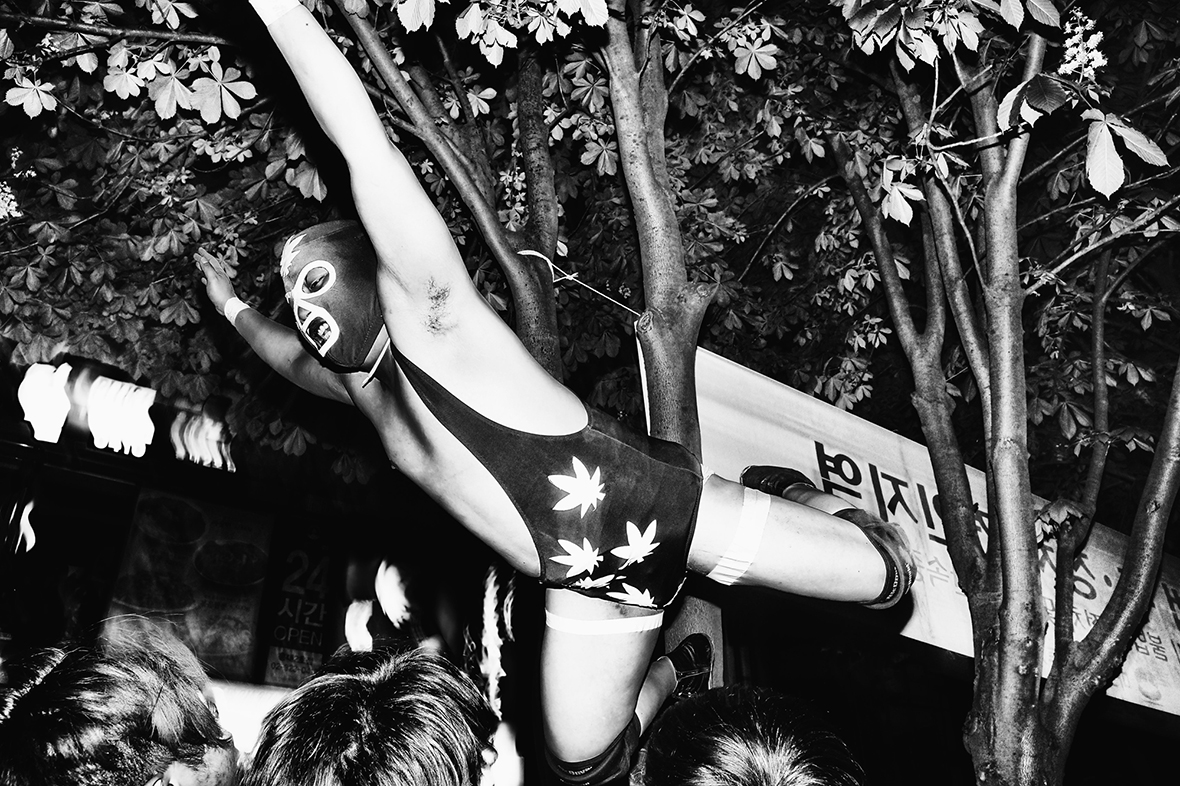
His photo series, Losing Face, offers a candid look inside the Seoul protests that arose from the revelation of former South Korean President Park Geun-hye’s scandal. Processed entirely in black and white, the powerful series uses slow shutter speeds and a bright flash to dramatic effect. Last year, the powerful series went on to win the prestigious Magnum Photography Award as well as the LensCulture Street Photography Awards.
他的作品《Losing Face》(《丢脸》) ,纪录了发生在韩国首尔街上,因前总统朴槿惠的丑闻而起的抗议活动,他的摄影为此事件提供一个坦率的视角。照片完全采用黑白处理,使用低快门速度和明亮的闪光灯拍摄,以达成极具戏剧张力的视觉效果。 2017年,此系列作品为 Estabrook 赢得了著名的玛格南摄影奖和 LensCulture 街头摄影奖。
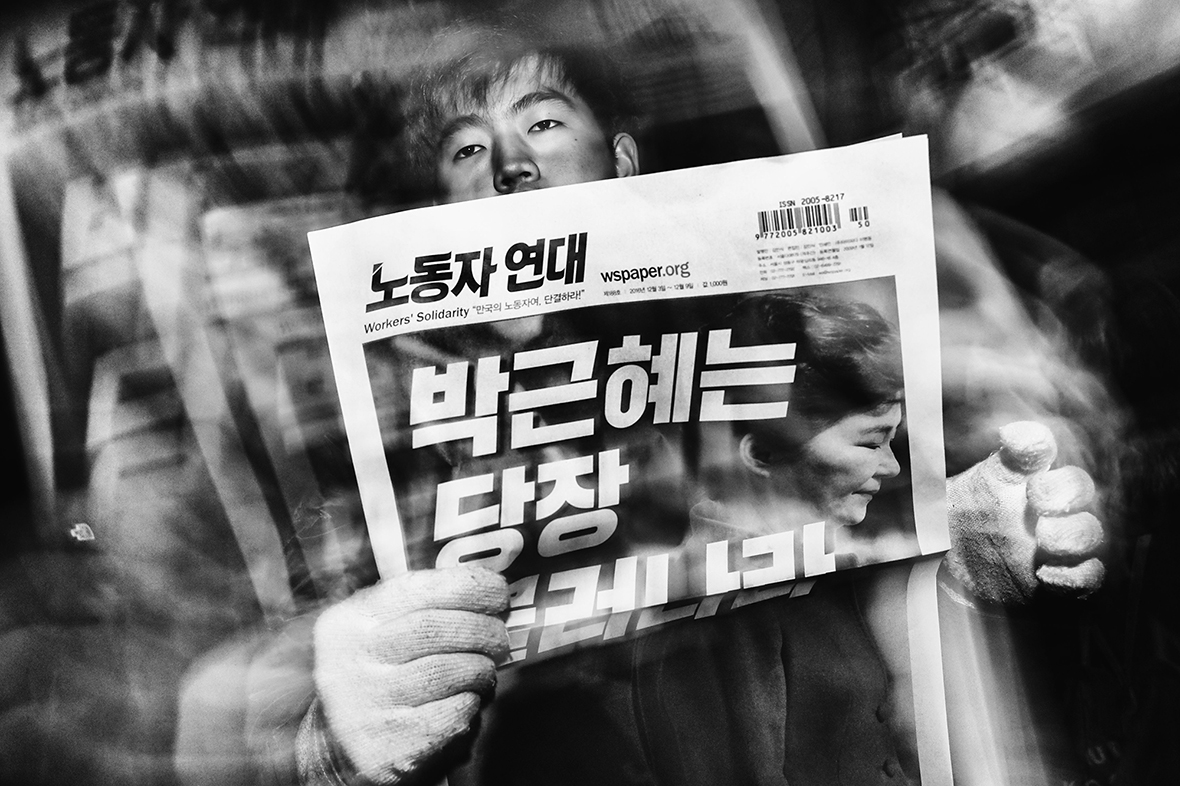
“When the street leads me to an experience like the Seoul protests, I feel like my job is to zero in on the energy and then conceptualize it in a way that enables it to be reintroduced back into the world,” Estabrook explains of his process. “It’s like a creative circuit. I just try to keep my mind open, so whenever a moment moves me, I’m able to ‘describe’ it with my photography.”
“当我被街头带着去体验像这次首尔的抗议活动时,我觉得我的工作是将注意力全部集中在当场释放出的能量上,然后捕捉并概念化这样的能量,再以一个能重新被导入世界的方式呈现出来。”Estabrook 这样解释他的创作过程。“这是一个创作循环的回圈。我尽量让自己的心思保持开放,所以每当有一个瞬间感动到我,我就能用我的照片去把那一瞬间 ‘描述’ 出来。”
